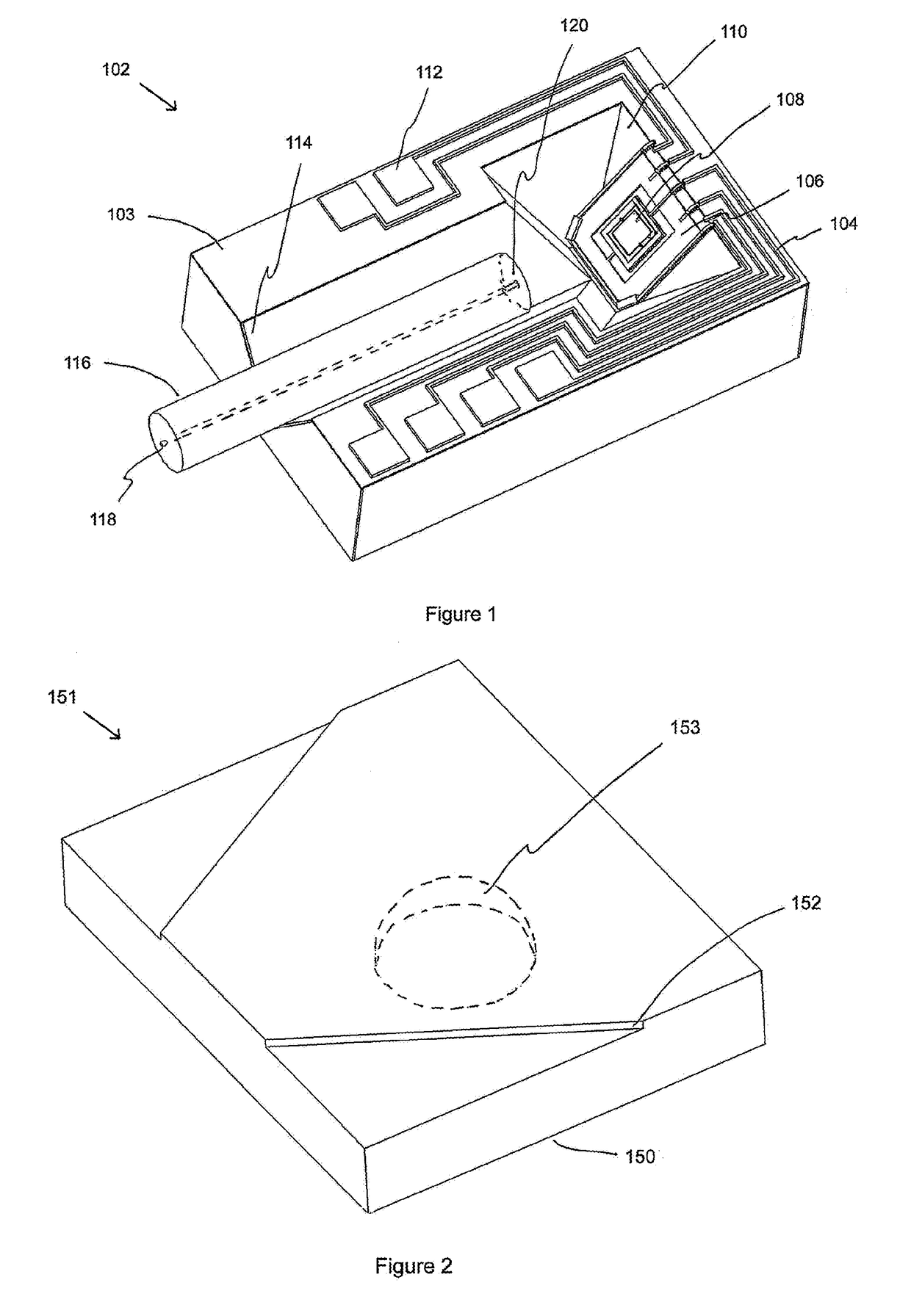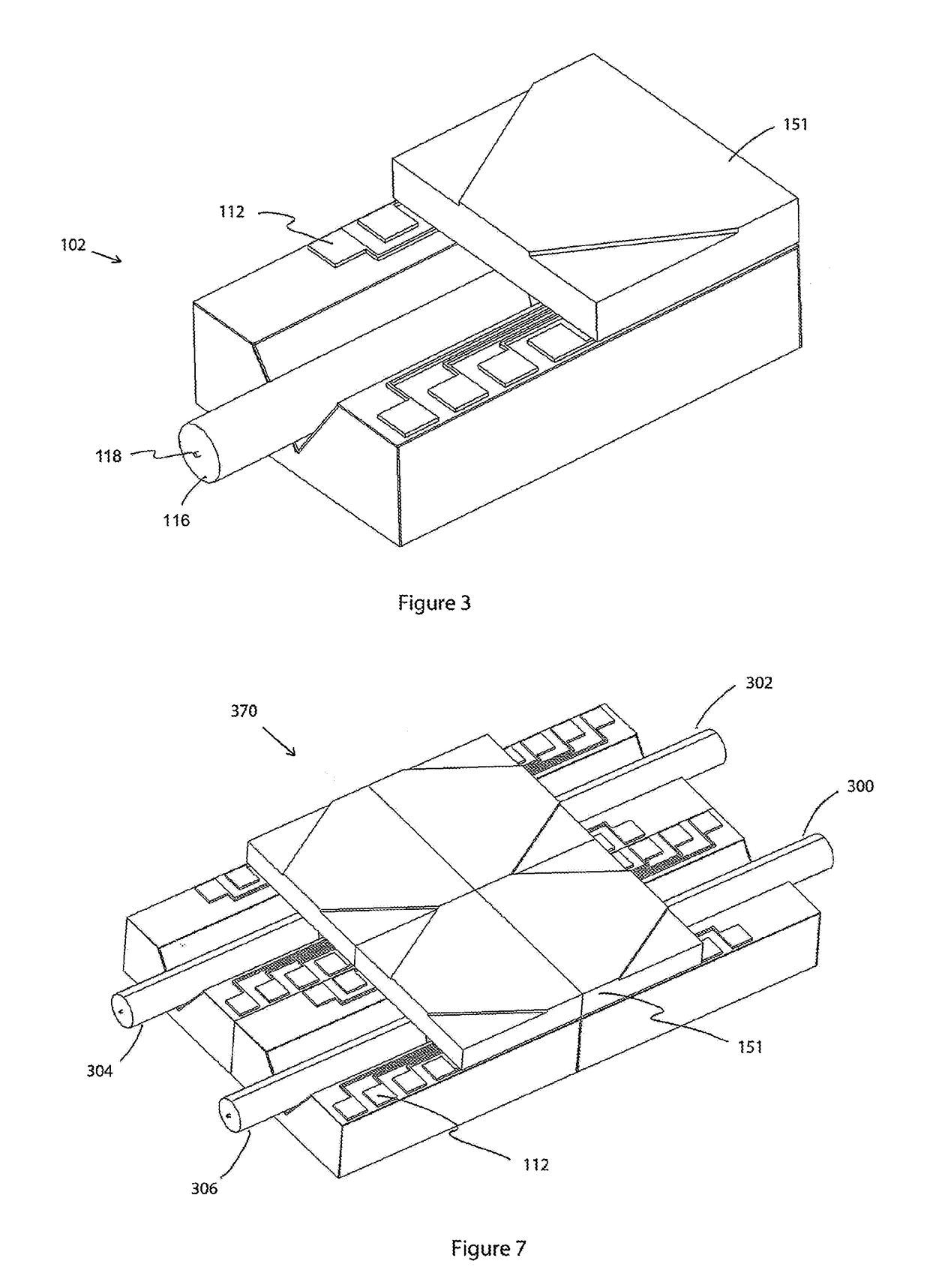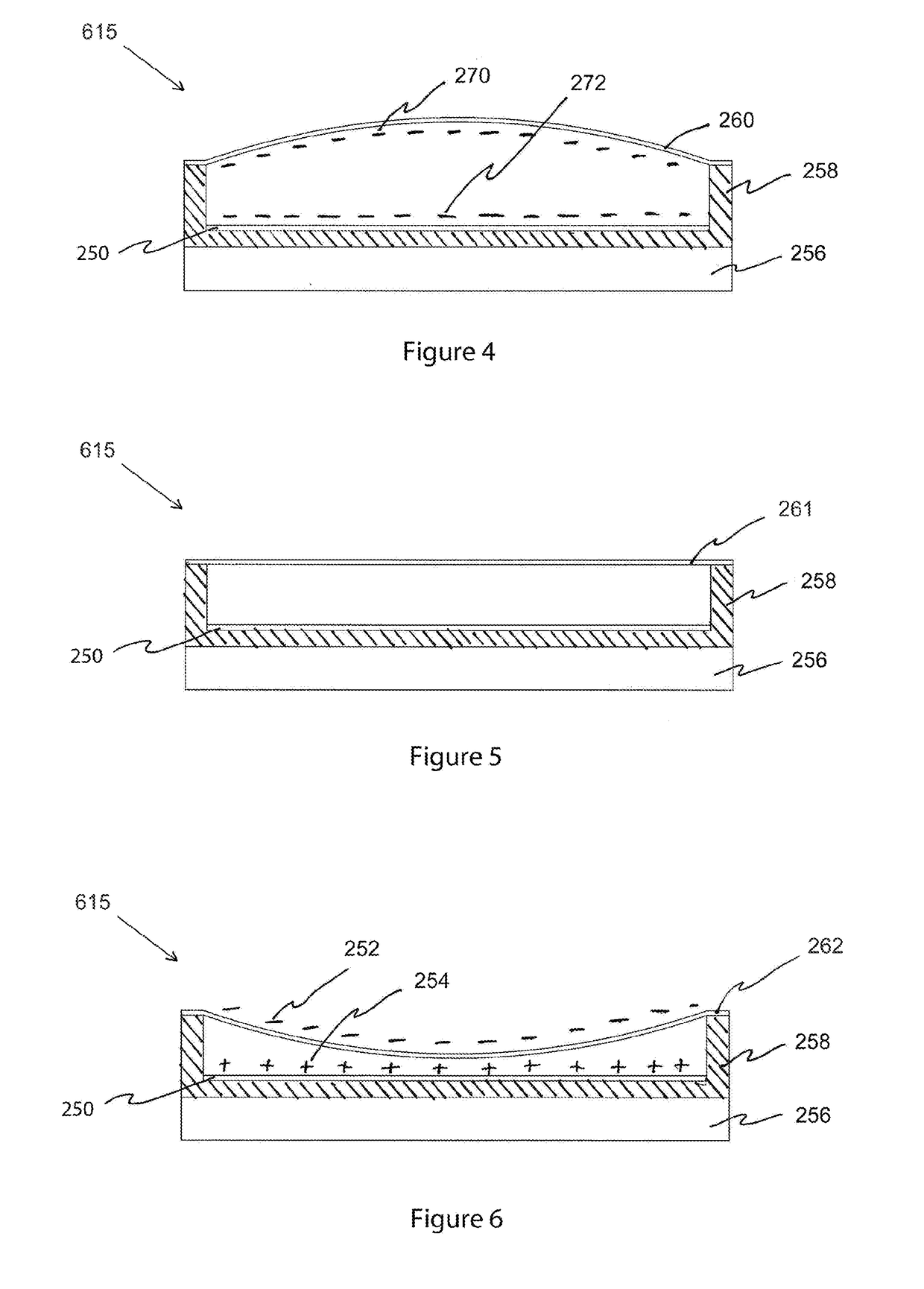Immersive Optical Projection System
- Summary
- Abstract
- Description
- Claims
- Application Information
AI Technical Summary
Benefits of technology
Problems solved by technology
Method used
Image
Examples
Embodiment Construction
[0045]FIG. 1 shows an example of a monolithically micromachined beam steering device 102. Its design and function is the subject of patents U.S. Pat. No. 5,872,880, U.S. Pat. No. 6,086,776, U.S. Pat. No. 6,127,926, and U.S. Pat. No. 7,201,824 B2. In one embodiment, light is first introduced into the core of optical element 116 at point 118 and is emitted at point 120. The slightly divergent beam then travels a short distance through free space and strikes the surface of double gimbaled micromirror 108. In another embodiment, an optical beam modifier, such as a ball lens, a GRIN lens, or any other optical element may be introduced after point 120 to further alter the beam before striking double gimbaled micromirror 108. In another embodiment, an optical beam modifier may be introduced after striking micromirror 108. Two additional examples of beam modifiers include an electrostatic comb driven, variable focus lens that dynamically controls beam divergence and has an optical axis that...
PUM
 Login to View More
Login to View More Abstract
Description
Claims
Application Information
 Login to View More
Login to View More - R&D
- Intellectual Property
- Life Sciences
- Materials
- Tech Scout
- Unparalleled Data Quality
- Higher Quality Content
- 60% Fewer Hallucinations
Browse by: Latest US Patents, China's latest patents, Technical Efficacy Thesaurus, Application Domain, Technology Topic, Popular Technical Reports.
© 2025 PatSnap. All rights reserved.Legal|Privacy policy|Modern Slavery Act Transparency Statement|Sitemap|About US| Contact US: help@patsnap.com



